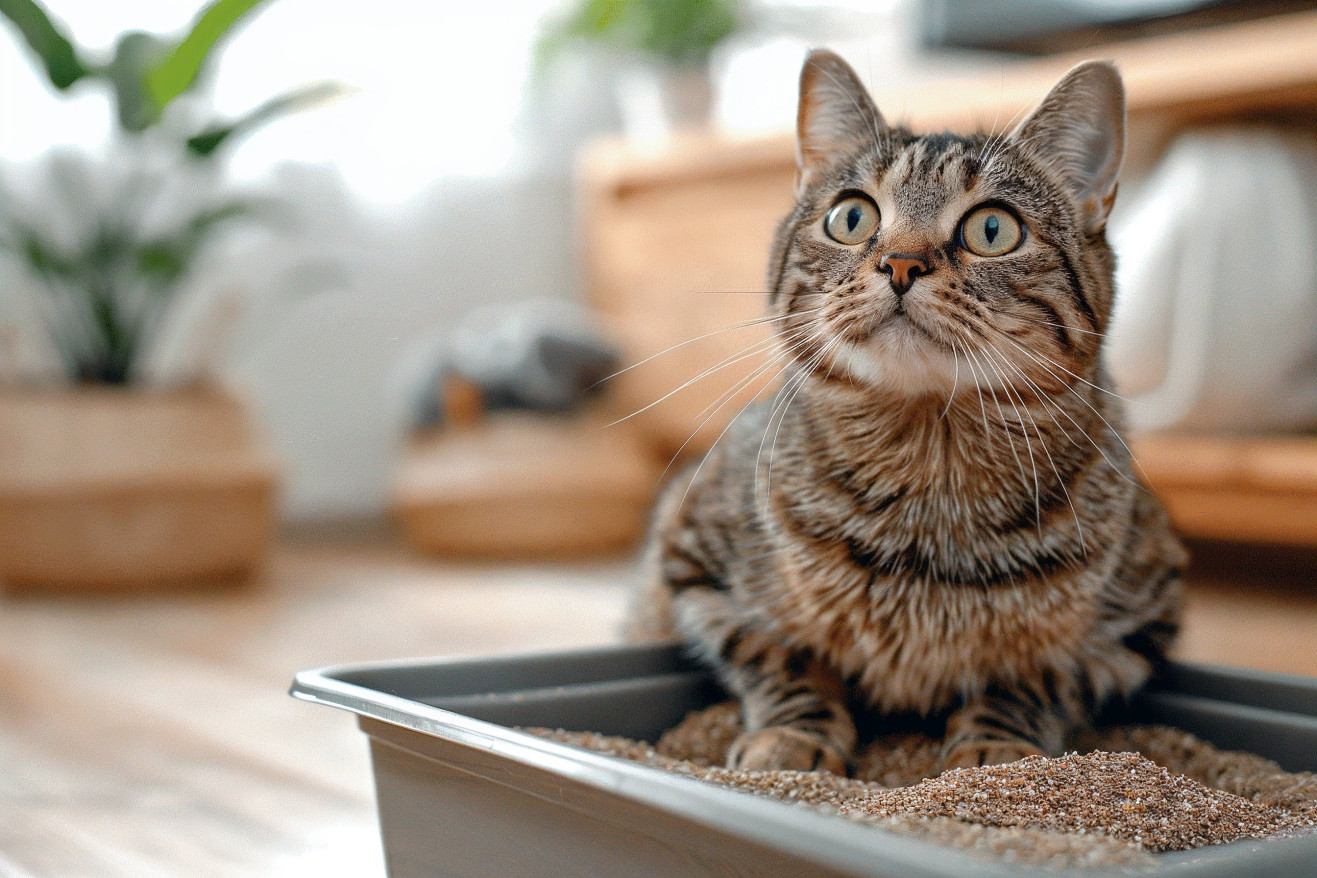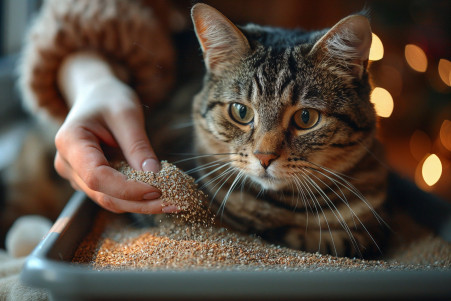How Often Should You Change Cat Litter? Expert Guidance
6 June 2024 • Updated 5 June 2024

You know that keeping your cat's litter box clean is important, but how often should you actually be changing the litter? While it's generally recommended that you scoop out clumps every day and change the litter completely once a week, there are other factors to consider, including the number of cats in your home, the type of litter you use, and the size of the litter box. You can also pay attention to the smell and look of the litter to see if you need to change it more often.
To help you better understand this popular question in cat care, we'll look at information from veterinarians, studies on cat behavior, and research conducted by consumer groups. This will help us come up with evidence-based recommendations for the best litter box maintenance schedules based on different scenarios. Following these recommendations will help you avoid potential health problems and make sure that your cat has a clean and safe place to live.
How often should you change cat litter?
A Good Litter Box Cleaning and Maintenance Routine
Keeping the litter box clean and comfortable is important for your cat’s health and happiness. According to PetMD, you should scoop out clumps and solid waste at least once a day, but ideally twice a day. This will help keep odors at bay and ensure that your cat has a clean place to go.
Cat Friendly Homes suggests cleaning the litter box with hot water and a small amount of dish soap every 1-4 weeks. Don’t use harsh chemicals or ammonia-based cleaners, as these can make the litter box less appealing to cats.
As tuft + paw points out, you should have one litter box per cat, plus one extra for multi-cat households. This will help prevent competition and ensure that each cat has a clean, comfortable place to go.
Most cats prefer soft, unscented clumping litters, which are also easier for owners to maintain, according to Cat Friendly Homes. Scented, dusty or aromatic litters can irritate cats and people with asthma.
If you keep the litter box clean and comfortable by scooping regularly, cleaning it when needed, and using the right type and number of litter boxes, you’ll be setting your cat up for success. This will help reduce stress and the likelihood of litter box problems. It will also make it easier to switch to a new litter if you ever need to.
How to Change Your Cat's Litter
If you're thinking about changing your cat's litter, it's important to do so gradually to avoid any potential problems and stress for your cat. According to PrettyLitter, you can do this by starting with an inch and a half of the new litter in the litter box and then adding a half-inch of the old litter on top. This way, your cat can get used to the new litter as they dig through the mix.
ARM & HAMMER suggests two ways to change your cat's litter: you can either introduce a second litter box with the new litter or you can mix the new litter into the old litter over the course of several days. Both of these methods will help your cat re-associate with their litter box.
You can also help your cat adjust to new litter by adding some of their old litter feces to the new litter, as tuft + paw explains. You can also help your cat adjust to the new litter by rewarding them with treats when they use the new litter.
When you're looking for a new litter, Modkat suggests looking for unscented, soft, and environmentally-friendly litters that may be more appealing to your cat. By making small changes and paying attention to how your cat reacts, you can help your cat adjust to a new litter that works for both of you.
When to Replace the Litter Box Itself
Plastic and wooden litter boxes will need to be replaced more often than stainless steel litter boxes, notes PrettyLitter. You'll know it's time to replace your litter box when you notice cracks, odors, or stains that won't go away. ARM & HAMMER says that you should consider buying a non-porous, high-quality litter box to make cleaning easier and extend the life of the box.
If you're bringing in a new litter box, make sure to clean and disinfect it thoroughly, says Purina. For households with multiple cats, Dr. Elsey's recommends replacing litter boxes once a year or every 6 months to make sure the environment stays fresh and odor-free. With the right litter box and a good replacement schedule, you can make sure your cat has a comfortable, low-maintenance space.
Where to Put the Litter Box and Other Setup Tips
Where you place the litter box and how you set it up can have a big impact on whether or not your cat will use it. Cat Friendly Homes advises putting litter boxes in quiet, low-traffic areas of your home to give your cat the privacy they need. Don't put the box near anything that makes noise, like a furnace or washing machine, or in a place where there's a lot of commotion. Also, don't put the box near your cat's food and water dishes.
If you use a liner or mat in the box, it can help catch litter that your cat kicks out and make it easier to clean, according to The Spruce Pets. If you want to make sure your cat has privacy and that you can control odors, you can use a covered litter box. NASC LIVE says that you should make sure the litter in the box is deep enough, which usually means it's between 2 and 4 inches deep, so that your cat can cover their waste.
If you set up the litter box in a way that makes your cat feel comfortable and secure, it can help you keep the box clean and smelling fresh and reduce the number of times you have to change the entire box. That said, even if you set up the litter box perfectly, your cat may still avoid using it, and you may need to do some additional troubleshooting to figure out why.
Dealing With Litter Box Avoidance and Other Behavioral Problems
Litter box avoidance can be caused by stress, medical issues, or even a cat's dislike of the litter or box, according to Cats.com. Making sure the litter box is cleaned often and placed in a good location can help prevent these behavioral issues.
If your cat is avoiding the litter, ARM & HAMMER suggests trying a new type of litter or box. It's also a good idea to talk to a vet to make sure there are no medical issues causing the litter box avoidance.
According to tuft + paw, making sure you have enough litter boxes and making changes slowly can help prevent litter box problems. By identifying the causes and making changes that are specific to your cat, you can make sure your cat has a clean and comfortable litter box.
Conclusion: How to Keep Your Litter Box Clean and Healthy
Keeping your litter box clean and healthy is important for your cat’s well-being. To ensure that your cat’s litter box is as clean and healthy as possible, follow the guidelines for litter box maintenance, which include scooping daily, washing weekly, and changing the litter every 2-4 weeks.
The frequency of litter changes will depend on the number of cats in your household, the type of litter you use, and the size of your litter box. Clumping litters will generally need to be changed less often than non-clumping litters. Pay attention to the litter box for signs that it needs to be changed, including odors, clumps, and wet litter.
When you need to change the type of litter you use, do so gradually over 1-2 weeks. This will help your cat adjust to the new litter. In addition, make sure that you have enough litter boxes in your home, choose unscented and soft litters, and create positive associations with the litter box to help your cat adjust to a new litter.
In addition to changing the litter, you should also change the litter box, especially if it’s made of plastic or wood, which can become porous over time. Choose a non-porous litter box and clean it before introducing it to your cat to help it last longer.
Finally, make sure that your litter box is set up and placed in a way that encourages your cat to use it. This includes making sure that the litter is deep enough and that the litter box is in a private location. If your cat is avoiding the litter box, make changes gradually and consult your vet if the problem persists.
By keeping your cat’s litter box clean and healthy and making sure that it meets your cat’s needs, you can prevent many common behavioral and health issues.


